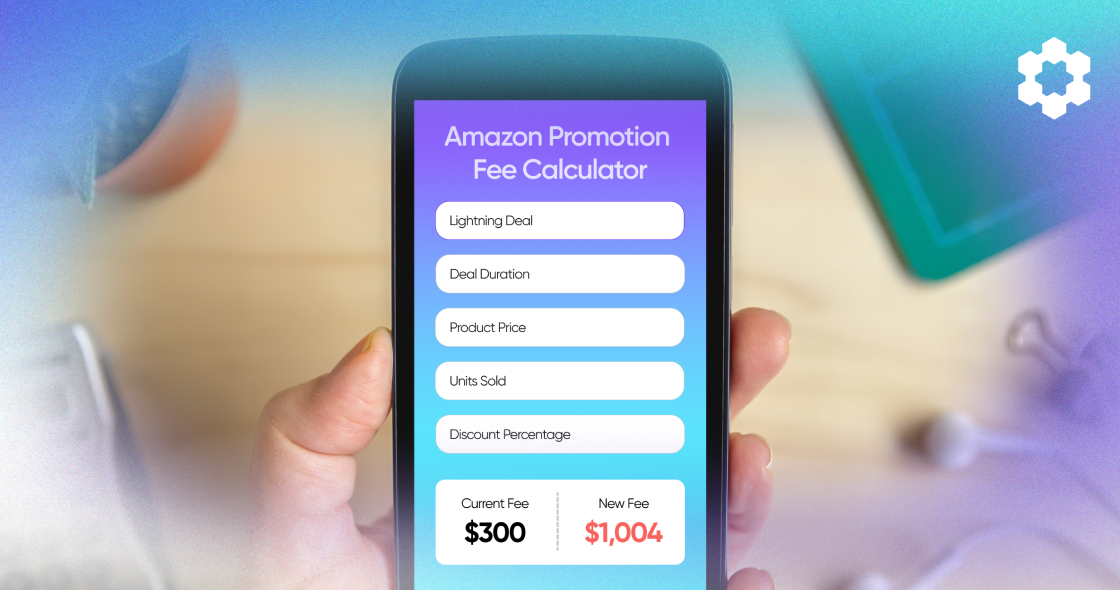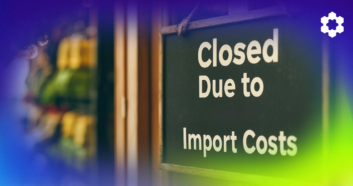Amazon Promotion Fee Calculator (2025)
Enter Your Promotion Details
Range: 1-14 days
Based on Amazon’s fee changes effective June 2, 2025
This calculator is for estimation purposes only
Will You Save or Pay More? Find Out with Our Interactive Calculator
Amazon has announced big changes to its promotions and deals fee structure, shifting toward a more performance-based model that aligns costs with results. Starting June 2, 2025, sellers will have more flexibility in running promotions while facing a restructured fee system that lowers upfront costs but introduces variable fees based on sales performance.
Before diving into the details of Amazon promotion fee changes, use our interactive calculator above to see exactly how these changes will impact your business. Enter your specific product details and promotion type to compare costs under both the current and new fee structures.
Now, let’s break down what these changes mean for your Amazon business and how to leverage them effectively.
More Flexible Deal Durations
One of the most impactful changes is the increased flexibility in scheduling Best Deals. Starting June 2, 2025, sellers will be able to:
- Run Best Deals on any day of the week
- Choose custom durations ranging from 1 to 14 days
- Better align promotions with consumer trends and business objectives
This flexibility allows sellers to experiment with different timing strategies and respond more nimbly to market conditions. Whether you want to boost sales during traditionally slower periods or capitalize on category-specific shopping patterns, this change gives you more control over your promotional calendar.
It’s worth noting that Peak Events (Prime Day, Prime Big Deal Days, Black Friday/Cyber Monday) will continue to have fixed dates and durations, so you’ll still need to plan accordingly for these high-traffic shopping periods.
Performance-Based Fee Structure
Amazon is revamping its fee structure to make it easier for sellers to test different promotional strategies by:
- Lowering upfront costs
- Introducing variable fees based on sales
- Capping variable fees to protect profitability
Best Deals and Lightning Deals
The new fee structure for Best Deals and Lightning Deals will change from a flat fee model to a hybrid approach:
| Deal Type | Current Fee | New Fee Structure (Starting June 2, 2025) |
|---|---|---|
| Best Deals | $300 per deal | $70 per day + 1.0% of deal sales (capped at $2,000) |
| Lightning Deals | $150 per deal | $70 per day + 1.0% of deal sales (capped at $2,000) |
This restructuring means that sellers running shorter deals will likely pay less upfront than before, making it more accessible to test promotional strategies. The 1% variable fee means Amazon’s compensation is now tied more directly to your success, but with the $2,000 cap ensuring that highly successful deals remain profitable for sellers.
Coupon Fees
Coupon fees are also changing from a per-unit model to a hybrid structure:
| Current Fee | New Fee Structure (Starting June 2, 2025) |
|---|---|
| $0.60 per unit sold | $5 per coupon + 2.5% of coupon sales |
According to Amazon, this change will result in lower coupon fees per unit sold for most products. This could be particularly beneficial for sellers of lower-priced items, where the previous $0.60 per unit fee represented a more significant percentage of the sale price.
Prime Day 2025 Changes
Amazon has also announced changes specific to Prime Day 2025, which they’re positioning as “an even longer and bigger event” than previous years. Key fee changes for the US store include:
- Prime Exclusive Discounts (PEDs): Increasing from $50 to $100 per PED
- Best Deals and Lightning Deals: Remaining unchanged from 2024 at $1,000 and $500 respectively
- Coupons: Using the same new fee structure as non-Peak days ($5 per coupon + 2.5% of coupon sales)
The increased PED fee reflects the growing scale of Prime Day and the visibility these promotions receive. With Amazon suggesting Prime Day 2025 will be longer than before, sellers should prepare for potentially increased sales opportunities despite the higher promotion costs.
Strategic Implications for Sellers
These fee structure changes create several strategic considerations for Amazon sellers:
1. Testing Short-Duration Deals
With the lower daily fee of $70 for Best Deals and Lightning Deals, sellers can now more affordably test shorter promotional periods. This creates opportunities to:
- Run quick 1-2 day promotions to test product responsiveness
- Compare performance of weekday versus weekend deals
- Experiment with different discount depths for the same duration
2. Calculating Break-Even Points
Under the new variable fee structure, it’s important to calculate your break-even points:
For Best Deals running 3 days:
- Fixed cost: $70 × 3 = $210
- Variable cost: 1% of sales (up to $2,000 cap)
- Total maximum cost: $210 + $2,000 = $2,210
Compared to the previous flat $300 fee, you’ll need to generate $21,000 in sales before hitting the fee cap. This means deals performing below this threshold may cost less than before, while high-performing deals will cost more (up to the cap).
3. Coupon Strategy Adjustments
The new coupon fee structure changes the economics of coupon promotions:
- Previous model: $0.60 per unit sold
- New model: $5 fixed fee + 2.5% of coupon sales
This benefits sellers of lower-priced items but may increase costs for higher-priced products. For example:
- A $20 product with 100 units sold:
- Old fee: $0.60 × 100 = $60
- New fee: $5 + ($20 × 100 × 2.5%) = $55
- A $100 product with 100 units sold:
- Old fee: $0.60 × 100 = $60
- New fee: $5 + ($100 × 100 × 2.5%) = $255
Sellers should model these costs against their specific product mix to understand the financial impact.
Preparing for the Changes
To get ready for these changes taking effect on June 2, 2025, sellers should:
- Audit your current promotion strategy: Review the performance of your existing promotions to understand how the new fee structure will impact your costs.
- Create a testing plan: Develop a structured approach to test different deal durations, discount levels, and timing to identify optimal strategies under the new system.
- Update your promotional calendar: Plan your 2025 promotional calendar with the new flexible options in mind, being strategic about when to run longer versus shorter deals.
- Prepare for Prime Day 2025: With the event expected to be longer and potentially generate more sales, ensure you have sufficient inventory and a clear promotional strategy.
- Monitor performance closely: Once the changes take effect, closely track the performance of your promotions to identify patterns and optimize your approach.
- Diversify your traffic sources: With promotion costs becoming more variable, consider supplementing your Amazon promotion strategy with external traffic to improve organic ranking and overall sales performance.
Drive high-converting external traffic to your Amazon listings with PixelMe, our AI-powered external traffic solution. Boost your organic rank, maximize ROAS, and unlock Amazon’s Brand Referral Bonus program with ease. Get your free ASIN audit now.
The Bottom Line
Amazon’s shift to a more performance-based fee structure for promotions and deals represents a sizable change in how sellers should approach their promotional strategies. By lowering upfront costs and introducing variable fees tied to sales, Amazon is making it easier for sellers to experiment with different promotional approaches while aligning their own compensation more closely with seller success.
For most sellers, these changes create new opportunities to test and optimize promotional strategies with lower initial investment. However, understanding the break-even points and carefully modeling the financial impact based on your specific product mix will be crucial to maximizing profitability under the new system.
As with any significant marketplace change, the sellers who adapt quickly and develop data-driven strategies will be best positioned to benefit from these new promotional options.
Keep your team informed with our weekly Amazon Seller Newsletter. With over 200 issues published, it’s your go-to resource for critical updates on policy changes, announcements, and community events. Subscribe or share with your team to get seller news delivered weekly.





